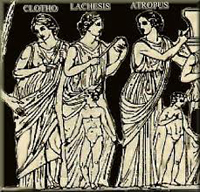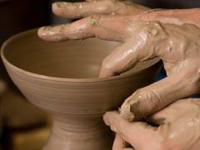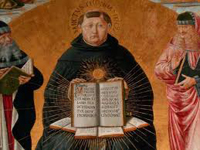The Spiritual Belief that Unites Humanity
Posted on 27 November 2012, 15:06
What spiritual belief has humanity held at all times, and in all places? In a world so split by religious, political and philosophical ideologies, can that be a meaningful question?
I believe it can. Consider the West where many people are aggressively Materialist: how many people do not know their star signs? Ask children who the mother of Jesus was, and they may look at you blankly. Ask them what their star sign is, and they may well know. It may be something of a joke to them, but the fact that they know, reminds us of a more general belief. So what might that be?
That belief is that behind all that we experience in this physical world, there is an aspect of reality that in specific and manifold ways orders what comes to pass in the here and now.
Astrologers believe, rightly or wrongly, that the synchronicity of time and place of the date of birth, in relationship to where the sun and moon and planets are at that time, tells us the kind of person that we shall become, and the events that we shall encounter. Some form of astrology has been found both in the East and the West for thousands of years. The belief may be questionable, but it is one example of humanity’s belief that behind the scenes there are spiritual forces at work bringing to pass all that we experience in physical reality.
A belief in spiritual forces at work is shown even in non-churchgoing Europe, where consulting of psychics and fortunetellers is very common, as it has been in most countries throughout recorded history.
Overriding spiritual forces were the Fates.
The ancient Greeks called the Fates or goddesses of Destiny, the Moirae. Their names were Clotho, Lachesis and Atropos, (below) and they controlled the life and destiny of everyone. Klotho spins the thread of life (brings a person’s life into existence), Lachesis measures it (looks at how long it currently is), and Atropos cuts the thread. When the thread is cut the person dies. (The Romans called these goddesses of destiny ”the Parcae”.). The Moirae were sometimes supposed to have been born of the Night, or of Chaos, and none of the gods, not even Zeus had the power to change their will. The Moirae were even capable of destroying an immortal.

Scandinavians also had three goddesses of Destiny, who likewise wove the threads of life, measured them, and cut them when a person died. They were called the Nornes, who likewise ruled the destiny of the gods and humankind. Urđr (Wyrd), Verđandi and Skuld come out from a hall standing at the Well of Urđr (well of fate) and they draw water from the well and take sand that lies around it, which they pour over Yggdrasill (the tree of life) so that its branches will not rot. (For the source of this picture see: The three Weird Sisters of Macbeth are Saxon Equivalents.)

The image of the thread of destiny is also found in East Asia, the red string of fate, also the red thread of destiny, and is a belief originating from Chinese legend and it is also used in Japanese legend. According to this myth, the gods tie an invisible red string around the ankles of those that are destined to meet each other in a certain situation or help each other in a certain way.
Chinese Yuan or Yuanfen, and also the Vietnamese duyęn phận is a Buddhist-related Chinese concept that means the predetermined principle that dictates a person’s relationships and encounters such as the affinity among friends or lovers.
Both the Aztecs and the Maya developed elaborate systems of recording dates with two calendars: a 365-day solar calendar, based on the position of the sun, and a 260-day ritual calendar used for divination. Each day of the ritual calendar was influenced by a unique combination of gods and goddesses. Divination involved interpreting the positive or negative meanings of these influences, which determined an individual’s fate. Priests also used the ritual calendar to choose the most favorable days for such activities as erecting buildings, planting crops, and waging war.
In Hinduism there is much of everything, but there is the common belief in reincarnation and Karma, where one’s fate and destiny in this life is determined by how one has lived in previous lives.
As for Catholic Christianity, in the Catholic Encyclopaedia, (found on the Web) we read: “Predestination… , taken in its widest meaning, is every Divine decree by which God, owing to His infallible prescience of the future, has appointed and ordained from eternity all events occurring in time, especially those which directly proceed from, or at least are influenced by, man’s free will. It includes all historical facts, as for instance the appearance of Napoleon or the foundation of the United States, and particularly the turning-points in the history of supernatural salvation, as the mission of Moses and the Prophets, or the election of Mary to the Divine Motherhood. Taken in this general sense, predestination clearly coincides with Divine Providence and with the government of the world”.

God is the Potter, we are the Clay.
The official formularies of Protestant Christianity also prominently feature predestination, although modern theologians and church members will have widely varying opinions.

Calvin presents his doctrine of Predestination.
When we come to consider Islam, once again we find the concept quite central. I find these statements on a website:
“Islamic Scholars and Predestination: Risaleh-i-Barkhavi says: “Not only can [Allah] do anything, He actually is the only One Who does anything. When a man writes, it is Allah who has created in his mind the will to write. Allah at the same time gives the power to write, then brings about the motion of the hand and the pen and the appearance upon paper. All other things are passive, Allah alone is active.”
“An.. important idea in Aztec mythology was that a predetermined fate shaped human lives. The Aztec ball game, about which historians know little, may have been related to this theme. Aztec temples, like those of other peoples throughout Mexico and Central America, had walled courts where teams of players struck a rubber ball with their hips, elbows, and knees, trying to drive it through a stone ring. Some historians believe that the game represented the human struggle to control destiny. It was a religious ritual, not simply a sport, and players may have been sacrificed after the game.”
There is this in common…
between official formularies of Islam, Catholicism, Lutheranism, Calvanism, Anglicanism, the Aztecs, the Maya, the Greek and Roman Fates, the Scandinavian Norns, Astrological beliefs, and Chinese Buddhism we find belief that all that happens in the physical world is rigidly determined by influences from a dimension other than the physical reality of the here and now.
It seems that humanity’s default position is that the experiences and events of our physical world are determined by influences from invisible dimensions. These invisible influences are sometimes described as God, Allah, the gods, Fate, the Stars, predestination, Providence, Karma, Guardian angels, or predetermined principles.
This leads us to the big question: What experience, common to humanity, would lead people everywhere to assume some kind of spiritual realm that orders physical existence?
An answer to that question would likely be, Meaningful Coincidence or Synchronicity. And it is this phenomenon that we are discussing in this book. Whatever the merits may lie in the varying traditional explanations, I shall be describing the ideas of open-minded physicists and psychologists about how synchronicity may be consistent with current theories about the ultimate nature of reality. The language of science, although not necessarily contradicting traditional beliefs, provides us with a means to explore, without our findings being pre-empted by dogma.
Michael Cocks edits the journal, Ground of Faith.
Afterlife Teaching From Stephen the Martyr by Michael Cocks is published by White Crow Books and available from Amazon and other bookstores.
Paperback Kindle

Next blog December 11
|